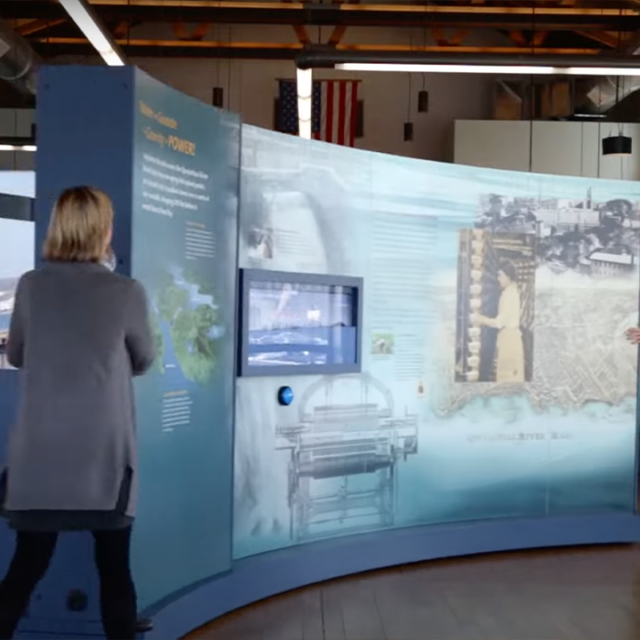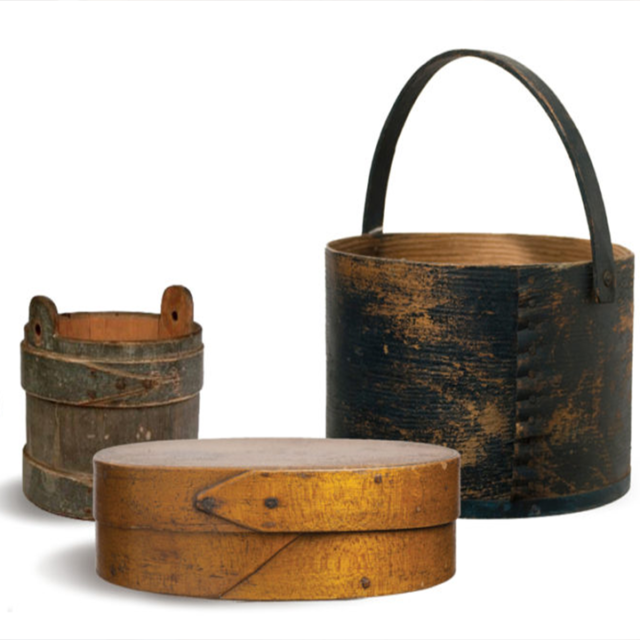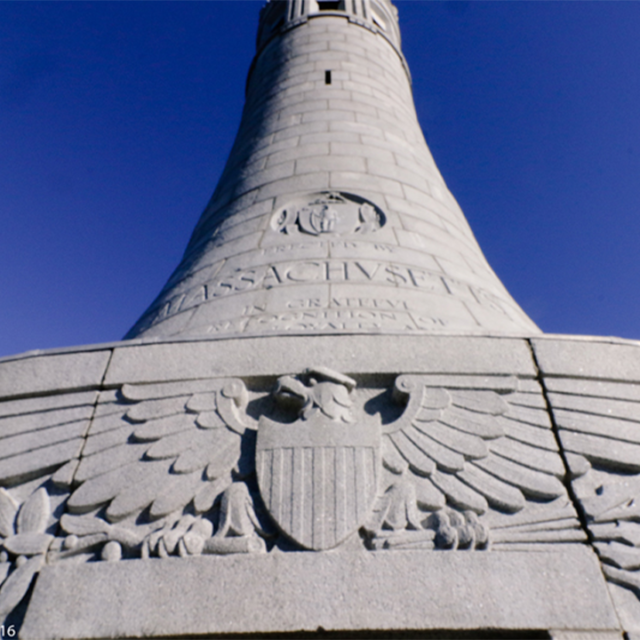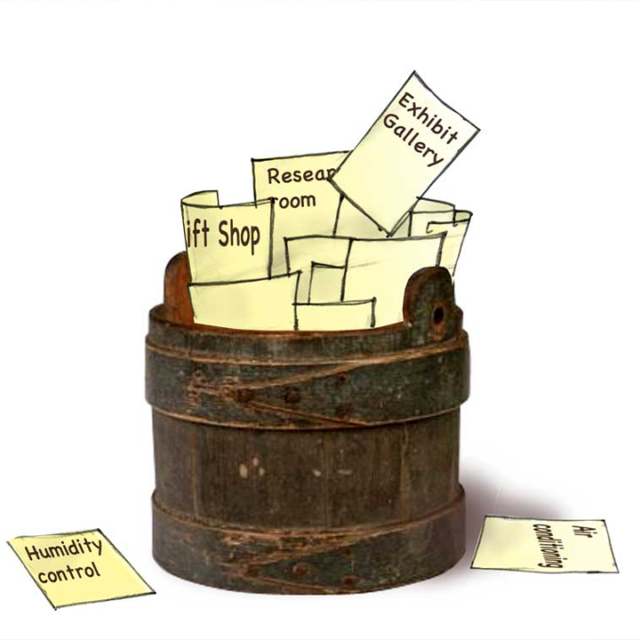Explore our content
Bonding With Clients Over Historical Finishes
Wallpaper therapy isn’t easy It was a typical onsite job meeting, representatives from the builders, owners, and designers crowded around folding tables discussing agenda items at the Dillaway Thomas House while construction went on around them. Next on the agenda was a milestone in the design-build process, to review finishes and historical wallpaper submittals by the…
Exhibit Makes Way For The Future
How Exhibit Spaces Can Change Roles Watch this video to see how an exhibit designed to move can transform a gallery. The challenge was to create an interactive exhibit and a changeable gallery suitable for community events. Our solution was to make this substantial installation easily moveable so that a small staff can quickly relocate the…
Exhibiting 18th-century “Tupperware”
Developing themes around piggins, boxes, and buckets at the new Hingham Heritage Museum In the old colonial days, just what did you do with your leftover porridge? Or kept your beans, barley, and groats? Or laundered your clothes or cured your meat? In 1700 almost 30 coopers worked in Hingham, 245 years before Tupperware was…
Work and Culture, Interactive Museum Memories
Exhibit sketch using the Blackstone River as a metaphor, visitors learn through interactive exhibits about how the mills changed the historical landscape Anne Conway, the director of the Museum of Work and Culture, is the driving force behind “Woonsocket Works” a new exhibit that will give visitors the opportunity to learn through interactive experiences about…
Why is there a lighthouse on top of a mountain?
The War Memorial on top of Mount Greylock It is not a lighthouse, it is a beacon. What is the difference? It is all a matter of context; a lighthouse is specifically designed to guide ocean-going vessels away from treacherous shores and help in pinpointing their location. A beacon is more general, “a fire or…
The Geometry of Giving
Modest as it may be, the donor panel symbolizes something critical; it represents the generosity of the person to whom the building or exhibit owes its existence. Once a neglected design genre, donor panel systems are now striking features in the public spaces of building lobbies. They have grown in sophistication along with the architecture…
Making the Magic of Mount Greylock Accessible
Accessible exterior exhibits provide access, meaning, and magic To the residents of western Massachusetts, selecting Mount Greylock as the scene for a supernatural thriller is as natural as the clouds that envelope the peak giving it its name. After all, they are familiar with sightings of Bigfoot (of course), and ghostly “Old Coot”, a restless Civil…
Rebalancing the Confederate History Experience
Interpretative exhibit design and lessons about American identity and family culture Our understanding of history changes over time, and the Civil War is a topic that is as alive as ever at the Confederate Reunion Grounds State Historic Site in Mexia, Texas. Established in 1889 as the Joseph E. Johnston Camp of the United…
What’s on your exhibit bucket list?
Hingham Historical Society’s bucket list – a visitor experience that combines hands-on interactives with visible storage and a new exhibit The Hingham Historical Society’s new Heritage Museum exhibit tells the story of “Bucket Town” where energetic and innovative craftsmen created tens of thousands of wooden buckets along with firkins, piggins, pantry boxes, churns, and other essential…
3 ways to transform a nature center into a nerve center
The third space is central to community vitality Silver Lake Nature Center unites community members in a positive, shared experience through purposeful exhibit content and design. Most of us are busy beavers when it comes to activities of daily living. We rise and shine at home, trudge off to work, shuttle back, and repeat the…
- « Previous
- 1
- 2
- 3
- 4
- Next »










